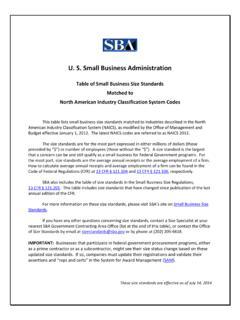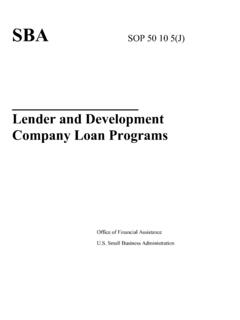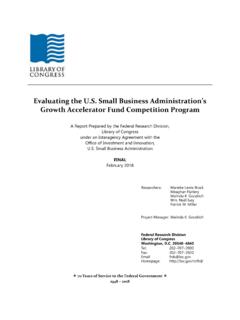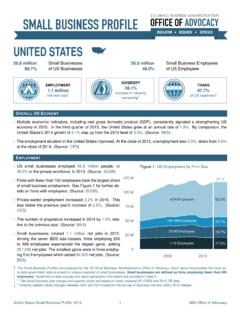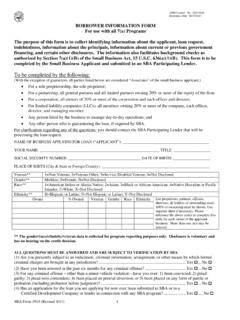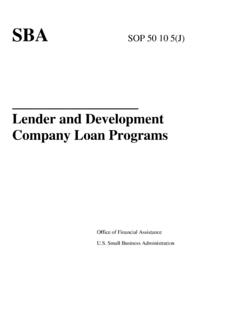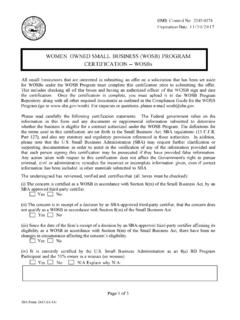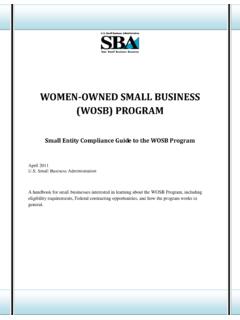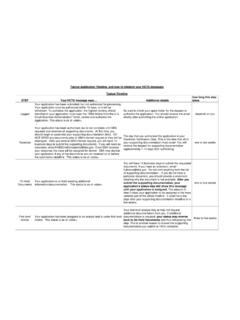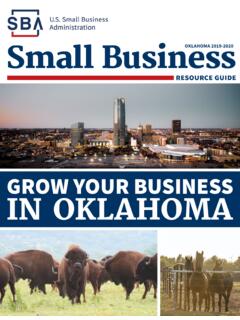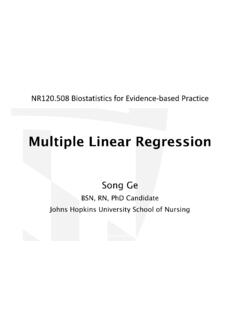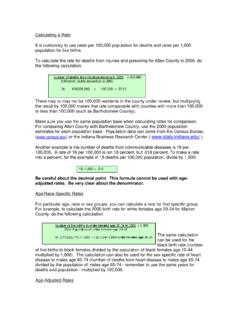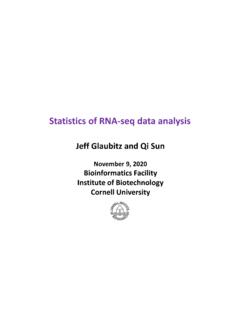Transcription of What is Accounting?
1 Worksheet Introduction to AccountingAccounting skills are essential when starting and operating a new business. The Introduction to accounting course described key concepts and principles for accounting and provided an overview on the different types of financial statements available. Additionally, the course described the accounting lifecycle. Use this worksheet to document your questions, thoughts, ideas, and action items as they relate to accounting . The questions below follow the topics discussed in the course. You can use the fillable PDF form fields or print the worksheet and write in the space provided.
2 accounting is the art of recording, classifying, summarizing, and analyzing the financial events of a businessWhat is accounting ? accounting is important to any business because the financial information allows entrepreneurs to make informed business decisions. Economic events are measured and described by financial processes. Use the table below to list ways your business uses accounting and the different types of users who use the accounting information. Uses Users Table 1 - Business Uses and Users Page 1 of 10 Worksheet Introduction to accounting accounting LifecycleAn accounting period reflects all the financial activity within a given period, such as quarterly and yearly.
3 At the end of each accounting period, the organization must prepare all financial statements so that investors can compare the results of successive time periods. Use the checklist below to ensure you are following the accounting lifecycle. Mark each box as the steps are completed. Step One: Analyze Business Transactions. Here, you begin with business transactions, which can include the sale of a product, the purchase of supplies, and rent. Use the space below to write down recent business transactions and the amount for each. Step Two: Record Transactions in Journal.
4 Now you will use a journal to enter the recorded business transactions. Make sure you record a debit and credit for each transaction. For example, you would record the rent expense under debit and credit that amount under the Cash account. Step Three: General Ledger. The business transactions are then posted to the general ledger account that it impacts. A general ledger is a moment by moment record of everything that happens in the business. There will be a general ledger for each account.
5 For example, you would record the rent expense in the Cash Account under the credit column. Step Four: Unadjusted Trial Balance. At the end of the accounting period you should calculate a trial balance. The trial balance assesses the equality of debits and credits as they are recorded in the general ledger. The preparation of a trial balance is very simple. All you have to do is list the ledger accounts balances. Step Five: Adjusting Entries. Sometimes the first trial balance calculation may show that the books are not balanced, so you will need to look for errors and then make adjustments.
6 This may include making adjustments to record an expense that may have been incurred but not yet recorded. Page 2 of 10 Worksheet Introduction to accounting Go through the Trial Balance to ensure the books are balanced. If not, you will need to record adjusting entries. For example, if rent was prepaid f or three months you would calculate the total for each month. Step Six: adjusted Trial Balance. After adjustments are made, you will need to recalculate the trial balance to include any adjustments made to ensure the accounts are balanced.
7 Add any adjustments from the trial balance to the adjusted Trial Balance. For example, since rent was prepaid for three months, you would record the prepaid rent amount for the next two months on one line and then the rent expense for the current month on another line. Step Seven: Financial Sheets. Once the balances are corrected from the adjusted trial balance, you will then need to prepare the balance sheet and income statement. Use a Balance Sheet to record your current assets, fixed assets, liabilities, and equity.
8 Refer to the Balance Sheet section for an example. Use an Income Statement to track your sales and expenses for the accounting period. Refer to the Income Statement section for an example. Step Eight: Closing Entries. Next, the accounts need to be closed out to avoid having revenue or expenses of another period added to current period. You will need to transfer the balances from temporary accounts to permanent accounts. Step Nine: Post Closing Trial Balance. The last step is to prepare a post-closing trial balance to ensure that all accounts have been closed properly and to test the equality of debit and credit balances of all the balance sheet accounts.
9 Record any accounts having non-negative balances after closing entries have been passed and posted. During the post-closing trial balance, it is important to ensure that the debit and credit totals are equal. Page 3 of 10 Worksheet Introduction to accounting Income and Expenses Money may flow into a business as cash sales, credit card sales, or other methods. Money may go out of a business when inventory is purchased, bills are paid, etc. Think about how money flows in and out of your business. Using the business transactions from the previous section, record the items that would be categorized as income and expenses in th e table below.
10 Income Expenses Table 2 - Income and Expenses Page 4 of 10 Worksheet Introduction to accounting Financial Statements Balance Sheet The Balance Sheet is a snapshot of your business. It outlines the financial condition of your business at a specific point in time and provides a financial perspective by highlighting what you own, and what you owe to other parties. Use the example Balance Sheet below to record your current assets, fixed assets, liabilities, and eq uity used in step seven in the accounting Life Cycle section.
